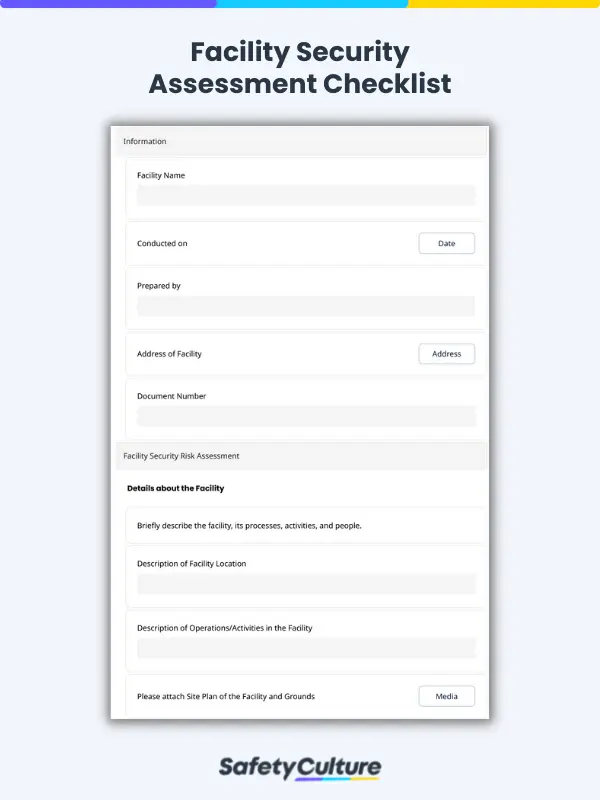What is a Facility Security Assessment Checklist?
A facility security assessment checklist helps a facility security officer (FSO) carry out an extensive internal scan of a facility’s current infrastructure and its vulnerabilities and potential threats. It helps define the necessary solutions to achieve their desired future state of security through a Facility Security Plan (FSP).
What Should a Facility Security Assessment Checklist Include?
Because an FSA requires an expansive review of a facility, a checklist would be a helpful guide in ensuring that all details would be checked and no major components would be missed. A comprehensive FSA checklist should contain the following:
- Background/details about the facility
- Risk assessment methods
- Assigned security personnel
- Vulnerabilities found
- Possible security threats
- Response to threats, incidents, and breaches
- Threat assessment
- Security training
- Physical inspections (internal and external)
- CCTV Surveillance
- Alarm systems
- Interviews (manager, employee)
- Other notable observations
4 Critical Steps in Performing Facility Security Assessments
The evolution of technology comes with the transformation of security threats. Criminals discover new mechanisms to break through the most stringent of security systems. Without physical or facility security assessments, building occupants are exposed to threats that can harm their assets and put them at much higher risk.
To ensure the effectiveness of facility or physical security assessments, FSOs should consider these key points in a facility security assessment checklist:
1. Identify current assets and potential risks.
Every facility will have its own infrastructure and vulnerabilities to its security program. A chemical facility possesses its own unique set of threats, as opposed to those of a school building, federal facility, or marine port.
It is important to carefully examine the company’s assets, strengths and weaknesses of building access control systems,and consequences of the security risks associated with the facility. This will help inform the FSO to know which threats are high-priority.
2. Interview occupants of the facility.
The foremost objective of facility security assessments is to protect people; property comes next. It is only practicable to consult inhabitants of the facility to get valuable insights on aspects, such as security policies, building access paths, current protocols, and history of theft incidents. These insights will make it easier for FSOs to devise a security plan that best suits the facility’s occupants.
3. Communicate assessment results to the management.
There should be a medium to directly discuss the security assessment report results with management, as they have the means to allot resources for implementing the FSP. Details that should be included in the report are:
- Date of the facility security assessment
- Types of tests performed
- Summary of security vulnerabilities identified according to priority
- Recommendations and specific steps on how to address the security holes
4. Schedule regular facility security assessments.
Having regular and consistent assessments is critical to remain current with security configurations and systems as technology continually evolve and new threats emerge. Some building administrators find it effective to conduct full facility security assessments annually, while others may prefer twice a year. However, companies can opt to do smaller inspections monthly to prevent potential issues from becoming big security risks.



